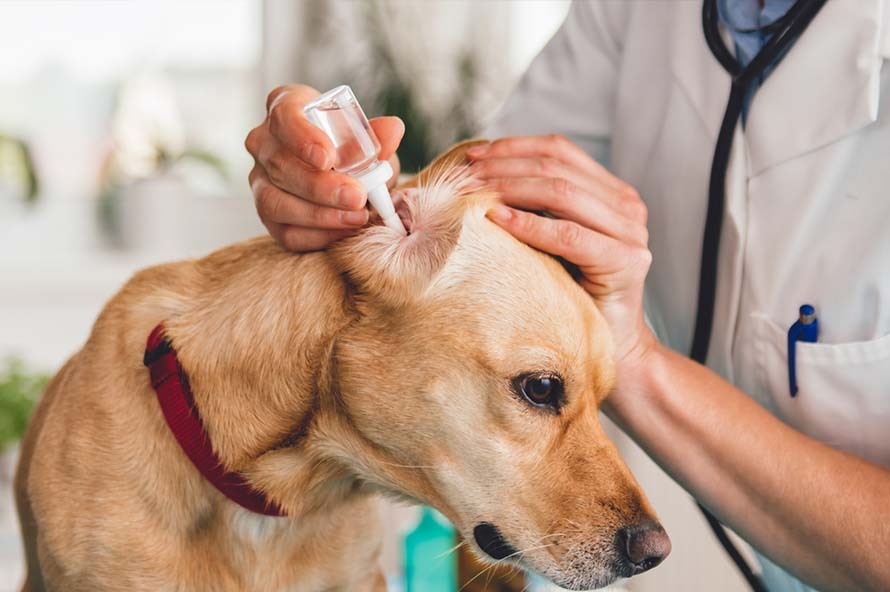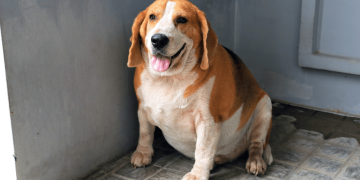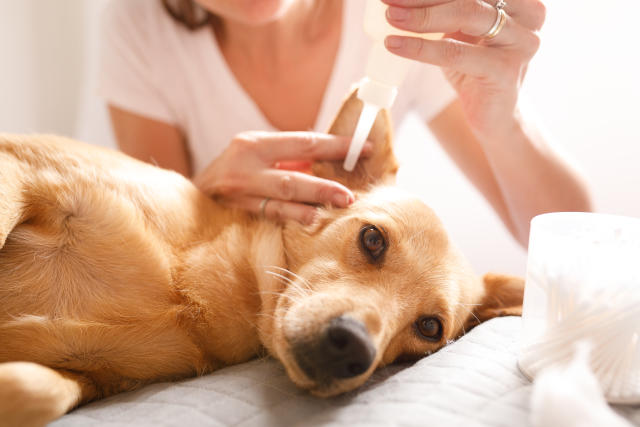Introduction:
As a pet owner, ensuring your furry friend’s health and hygiene is part of your daily routine. Among the many aspects of pet care, cleaning your pet’s eyes and ears may not always seem like a priority, but it’s a crucial part of keeping them comfortable and preventing infections. Pets, especially dogs and cats, can experience eye discharge and ear wax buildup that, if left unaddressed, could lead to discomfort or more serious health issues.
This article will discuss the causes of eye discharge and ear wax in pets, how to safely clean these areas, and whether regular cleaning is necessary. We’ll also explore when it’s time to consult a veterinarian for further care.
1. Understanding Eye Discharge in Pets
Eye discharge is a common issue for pets, especially dogs, but it can occur in cats as well. It refers to the fluid or mucus that collects around the eye area. While some amount of discharge is normal, especially in certain breeds, excessive or abnormal discharge could indicate an underlying health problem.
Causes of Eye Discharge in Pets:
- Normal Tear Production: Some amount of tear production is completely natural. Dogs with large eyes, such as Pugs and Bulldogs, are more prone to eye discharge due to their eye structure.
- Allergies: Pets can suffer from environmental allergies that cause irritation in the eyes, leading to excessive tearing and discharge.
- Infections: Bacterial or viral infections, such as conjunctivitis, can cause thick, greenish or yellow discharge.
- Blocked Tear Ducts: Sometimes, the tear ducts can become blocked, causing tears to accumulate in the eyes and result in excess discharge.
- Foreign Objects: A foreign body (e.g., dust, grass, or sand) can cause irritation in the eye, leading to watery eyes and discharge.
Signs of Abnormal Eye Discharge:
- Discharge that is green, yellow, or thick in consistency.
- Swelling or redness around the eyes.
- Squinting or pawing at the eyes.
- Excessive tearing that doesn’t improve.
How to Clean Your Pet’s Eyes:
- Use a Pet-Specific Eye Cleaner: Choose a gentle eye cleaner that’s designed for pets. Avoid using human eye drops or solutions, as they can be too harsh.
- Moisten a Cotton Ball or Soft Cloth: Gently moisten a cotton ball or soft cloth with the eye cleaner or saline solution.
- Wipe the Area: Gently wipe away the discharge from the corner of your pet’s eye, working from the corner of the eye to the outside. Be gentle to avoid causing irritation.
- Avoid Touching the Eye: Avoid directly touching the eyeball to prevent injury or further irritation.
When to Seek Veterinary Help:
If the eye discharge is persistent, has a foul odor, or is accompanied by swelling or redness, it’s time to see a veterinarian. The vet may need to examine your pet for underlying conditions like infections, conjunctivitis, or tear duct blockages.
2. Understanding Ear Wax and Ear Infections in Pets
Ear wax buildup and ear infections are common, especially in pets with floppy ears, such as Cocker Spaniels, Basset Hounds, and Dachshunds. Ear wax serves a protective function by trapping dirt and debris, but too much buildup can lead to discomfort or infections.
Causes of Ear Wax Buildup:
- Normal Wax Production: Some dogs and cats naturally produce more ear wax than others. Pets with long or floppy ears are more prone to wax buildup because their ear structure can trap moisture and debris.
- Allergies: Environmental or food allergies can lead to inflammation in the ears, causing increased ear wax production.
- Ear Infections: Bacterial, fungal, or yeast infections often cause excessive wax production. Infections can also result in a foul odor, redness, and swelling in the ear.
- Parasites: Ear mites can lead to significant ear wax buildup, accompanied by itching and discomfort.
- Dirty Environments: Pets that spend a lot of time outdoors or in dirty environments may have more exposure to dirt and dust, leading to ear wax buildup.
Signs of Ear Problems in Pets:
- Excessive scratching or rubbing of the ears.
- Foul odor coming from the ears.
- Head shaking or tilting.
- Redness, swelling, or discharge in the ears.
- Sensitivity to touch around the ears.
How to Clean Your Pet’s Ears:
- Choose a Pet-Specific Ear Cleaner: Select an ear cleaner designed for pets. Avoid using alcohol or hydrogen peroxide, as they can be too harsh and may cause irritation.
- Gently Massage the Base of the Ear: Squeeze a few drops of ear cleaner into your pet’s ear canal, and gently massage the base of the ear to help loosen the wax.
- Wipe Away the Wax: Use a soft cotton ball or gauze to wipe the ear canal and outer ear, removing the loosened wax and debris. Avoid using cotton swabs as they can push debris further into the ear canal.
- Dry the Ear: After cleaning, use a dry cotton ball to gently wipe the inside of the ear to remove any excess moisture. Keeping the ear dry is important to prevent infections.
When to Seek Veterinary Help:
If your pet is experiencing persistent ear problems, including excessive wax buildup, foul odor, or signs of infection (such as discharge or swelling), it’s best to consult a veterinarian. Infections or ear mites may require medication or prescription ear treatments.

3. Should You Clean Your Pet’s Eyes and Ears Regularly?
Regular Eye Care:
Pets that are prone to eye discharge, such as those with long-haired breeds or certain eye conditions, may benefit from regular eye cleaning. For pets without chronic eye issues, cleaning every few weeks or as needed is usually sufficient. However, if your pet has excessive or abnormal discharge, more frequent cleaning may be necessary.
Regular Ear Care:
For pets prone to ear wax buildup or infections, regular ear cleaning can help prevent problems. For example, pets with floppy ears may need their ears cleaned once a month or more frequently depending on their lifestyle. Pets with allergies or skin conditions may also benefit from more regular cleaning.
It’s important to note that over-cleaning the ears or eyes can lead to irritation or drying. Always ensure that you are using appropriate products and only cleaning as necessary.
4. Tips for Safe and Effective Cleaning:
- Be Gentle: The skin around your pet’s eyes and ears is sensitive. Always be gentle when wiping or cleaning these areas to avoid injury or discomfort.
- Use Appropriate Products: Always use products that are specifically designed for pets. Human products may be too strong and cause irritation.
- Watch for Signs of Infection: If your pet’s eyes or ears show signs of infection, such as swelling, redness, discharge, or a foul odor, seek veterinary care promptly.
- Create a Routine: If your pet requires regular eye or ear cleaning, make it a part of their grooming routine to reduce stress and make the process smoother for both of you.
5. Conclusion
Eye discharge and ear wax buildup are common issues in pets, but with the right approach, they can be managed effectively. Regular cleaning of your pet’s eyes and ears can help prevent infections, reduce discomfort, and keep them feeling their best. Be sure to use pet-safe products, clean only as needed, and watch for signs that may indicate an underlying issue. If you’re unsure or if your pet has persistent problems, consult with your veterinarian for advice and treatment options.
By maintaining proper hygiene for your pet’s eyes and ears, you can ensure they remain healthy, happy, and comfortable throughout their lives.























































